246 books about Individual Artists and 8
start with D
246 books about Individual Artists and 8
246 books about Individual Artists
8 start with D start with D
8 start with D start with D
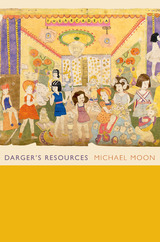
Darger's Resources
Michael Moon
Duke University Press, 2012
Henry Darger (1892–1973) was a hospital janitor and an immensely productive artist and writer. In the first decades of adulthood, he wrote a 15,145-page fictional epic, In the Realms of the Unreal. He spent much of the rest of his long life illustrating it in astonishing drawings and watercolors. In Darger's unfolding saga, pastoral utopias are repeatedly savaged by extreme violence directed at children, particularly girls. Given his disturbing subject matter and the extreme solitude he maintained throughout his life, critics have characterized Darger as eccentric, deranged, and even dangerous, as an outsider artist compelled to create a fantasy universe. Contesting such pathologizing interpretations, Michael Moon looks to Darger's resources, to the narratives and materials that inspired him and often found their way into his writing, drawings, and paintings. Moon finds an artist who reveled in the burgeoning popular culture of the early twentieth century, in its newspaper comic strips, pulp fiction, illustrated children's books, and mass-produced religious art. Moon contends that Darger's work deserves and rewards comparison with that of contemporaries of his, such as the "pulp historians" H. P. Lovecraft and Robert Howard, the Oz chronicler L. Frank Baum, and the newspaper cartoonist Bud Fisher.
[more]

DAVID HUNTER STRUTHER
ONE OF THE BEST DRAUGHTSMEN THE COUNTRY POSSESSES
JOHN A. CUTHBERT
West Virginia University Press, 1997
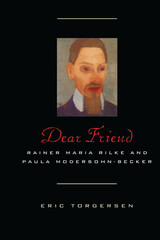
Dear Friend
Rainer Maria Rilke and Paula Modersohn-Becker
Eric Torgersen
Northwestern University Press, 2000
In 1908, Rainer Maria Rilke wrote "Requiem for a Friend" in memory of Paula Modersohn-Becker, the German painter who had profoundly affected him and who had died a year earlier. Although a great modern painter, Modersohn-Becker is remembered primarily as she is portrayed in Rilke's poem. Dear Friend looks at the relationship of two great artists whose often-strained friendship was extraordinary for both.
[more]

Degas
The Artist’s Mind
Theodore Reff
Harvard University Press, 1987
More than any other Impressionist, Degas consciously based his work on ideas. “What I do is the result of reflection and study of the great masters,” he once confessed; “of inspiration, spontaneity, temperament I know nothing.” Theodore Reff here shows us the intellectual power and originality of Degas’s complex art—as seen in his ingenious pictorial strategies and technical innovations; his use of motifs like the window, the mirror, the picture within the picture; his invention of striking, psychologically compelling compositions; and his creation of a sculptural idiom at once formal and vernacular. These essays also investigate Degas’s contacts with leading novelists and poets of his time and his efforts to illustrate or draw inspiration from their works.
[more]
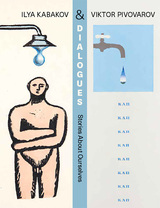
Dialogues
Ilya Kabakov and Viktor Pivovarov, Stories about Ourselves
Ksenia Nouril
Rutgers University Press, 2020
Artists in the Soviet Union faced a difficult choice: either join the official academies and make art that conformed to the state’s aesthetic and ideological dictates, or attempt to develop alternative artistic practices and spheres for exhibiting their work. In the early 1970s, conceptual artists Ilya Kabakov and Viktor Pivovarov chose the latter option, turning their limited resources into an asset by pioneering an entirely new artistic genre: the album. Somewhere between drawings and novels, Kabakov and Pivovarov’s albums were also the basis for unique performance pieces, as the artists invited select audiences to their Moscow apartments for private readings and viewings of the albums, helping to cultivate an alternative artistic community in the process.
This exhibition catalog brings together Kabakov and Pivovarov’s key works for the first time, putting the two artists in dialogue and recreating their artistic community. It not only includes nearly hundred pages of full-color illustrations, but also provides complete English translations of the Russian texts that appear in the volume, plus new interviews with each artist. Taken together, they give viewers a new appreciation of the different aesthetic strategies each artist used to depict the absurdities of everyday life in the Soviet era. Published in partnership with the Zimmerli Museum.
This exhibition catalog brings together Kabakov and Pivovarov’s key works for the first time, putting the two artists in dialogue and recreating their artistic community. It not only includes nearly hundred pages of full-color illustrations, but also provides complete English translations of the Russian texts that appear in the volume, plus new interviews with each artist. Taken together, they give viewers a new appreciation of the different aesthetic strategies each artist used to depict the absurdities of everyday life in the Soviet era. Published in partnership with the Zimmerli Museum.
[more]
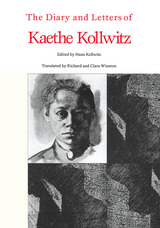
Diary and Letters of Kaethe Kollwitz
Kaethe Kollwitz
Northwestern University Press, 1988
One of the great German Expressionist artists, Kaethe Kollwitz wrote little of herself. But her diary, kept from 1900 to her death in 1945, and her brief essays and letters express, as well as explain, much of the spirit, wisdom, and internal struggle which was eventually transmuted into her art.
[more]
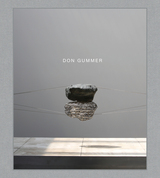
Don Gummer
Peter Plagens
The Artist Book Foundation, 2021
The trajectory of Don Gummer’s career as a sculptor began in New York City in the late 1970s with his wall reliefs of painted wood, carefully layered geometric works exhibiting a strong architectural influence. Moving beyond wood to stone, bronze, stainless steel, aluminum, and glass as his primary materials, his artworks evolved into subtly inventive freestanding sculptures, often of monumental scale, that exhibit his unfailing attention to craftsmanship and detail. The Artist Book Foundation is delighted to announce the forthcoming publication of Don Gummer, a new monograph on the artist and his highly acclaimed body of work.
Gummer was born in Louisville, Kentucky, in 1946 and grew up in Indianapolis, Indiana, where he attended the Herron School of Art and Design at Indiana University. He subsequently received both a BFA and an MFA from Yale University’s School of Fine Arts. In a 2001 interview with Peter Plagens, American artist and art critic, Gummer described his interest in sculpture as “the recontextualization of natural phenomena, of unaltered things brought into aesthetic balance by choosing and placing.” Using balance, proportion, and his unique sense of harmony, the artist is able to make durable materials seem almost buoyant. Negative space becomes an intrinsic element in his work, imparting a sense that his exquisite, seemingly permanent forms are ultimately as fleeting as any of nature’s creations would be.
The artist’s works can be found in many public collections including the Butler Institute of American Art in Youngstown, Ohio; the Massachusetts Museum of Contemporary Art in North Adams, Massachusetts; and Chase Manhattan Bank and Chemical Bank, both in New York City. He has received a number of awards from prestigious organizations such as the Louis Comfort Tiffany Foundation and the National Endowment for the Arts, and he was Visiting Artist at the American Academy in Rome. Some of his most recent sculptures appeared around Indianapolis in conjunction with his 2016 exhibition, Back Home Again.
[more]
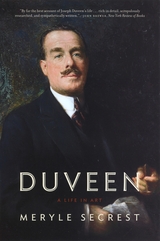
Duveen
A Life in Art
Meryle Secrest
University of Chicago Press, 2005
Anyone who has admired Gainsborough's Blue Boy of the Huntington Collection in California, or Rembrandt's Aristotle Contemplating the Bust of Homer at the Metropolitan Museum of Art in New York owes much of his or her pleasure to art dealer Joseph Duveen (1869–1939). Regarded as the most influential—or, in some circles, notorious—dealer of the twentieth century, Duveen established himself selling the European masterpieces of Titian, Botticelli, Giotto, and Vermeer to newly and lavishly wealthy American businessmen—J. P. Morgan, John D. Rockefeller, and Andrew Mellon, to name just a few. It is no exaggeration to say that Duveen was the driving force behind every important private art collection in the United States.
The first major biography of Duveen in more than fifty years and the first to make use of his enormous archive—only recently opened to the public—Meryle Secrest's Duveen traces the rapid ascent of the tirelessly enterprising dealer, from his humble beginnings running his father's business to knighthood and eventually apeerage. The eldest of eight sons of Jewish-Dutch immigrants, Duveen inherited an uncanny ability to spot a hidden treasure from his father, proprietor of a prosperous antiques business. After his father's death, Duveen moved the company into the riskier but lucrative market of paintings and quickly became one of the world's leading art dealers. The key to Duveen's success was his simple observation that while Europe had the art, America had the money; Duveen made his fortune by buying art from declining European aristocrats and selling them to the "squillionaires" in the United States.
"By far the best account of Joseph Duveen's life in a biography that is rich in detail, scrupulously researched, and sympathetically written. [Secrest's] inquiries into early-twentieth-century collecting whet our appetite for a more general history of the art market in the first half of the twentieth century."—John Brewer, New York Review of Books
The first major biography of Duveen in more than fifty years and the first to make use of his enormous archive—only recently opened to the public—Meryle Secrest's Duveen traces the rapid ascent of the tirelessly enterprising dealer, from his humble beginnings running his father's business to knighthood and eventually apeerage. The eldest of eight sons of Jewish-Dutch immigrants, Duveen inherited an uncanny ability to spot a hidden treasure from his father, proprietor of a prosperous antiques business. After his father's death, Duveen moved the company into the riskier but lucrative market of paintings and quickly became one of the world's leading art dealers. The key to Duveen's success was his simple observation that while Europe had the art, America had the money; Duveen made his fortune by buying art from declining European aristocrats and selling them to the "squillionaires" in the United States.
"By far the best account of Joseph Duveen's life in a biography that is rich in detail, scrupulously researched, and sympathetically written. [Secrest's] inquiries into early-twentieth-century collecting whet our appetite for a more general history of the art market in the first half of the twentieth century."—John Brewer, New York Review of Books
[more]
READERS
Browse our collection.
PUBLISHERS
See BiblioVault's publisher services.
STUDENT SERVICES
Files for college accessibility offices.
UChicago Accessibility Resources
home | accessibility | search | about | contact us
BiblioVault ® 2001 - 2024
The University of Chicago Press









